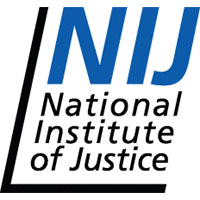Home
Welcome, esteemed guest!
Introduction
With a field like synthetic biology making leaps and bounds every year towards a realization of industrial and commercial use, safety is at the forefront of the minds of individuals deciding whether to start incorporating genetically modified organisms into their daily routines. People want to be certain that this new and exciting opportunity will be safe for both them and their community. Synthetic biologists are no strangers to safety themselves while working with biohazardous materials and inside high-tech biology labs, but sometimes the safety of the end-goal, products, and processes utilized by people every day can elude even the most well-thought-out projects. This page hopes to help these projects work towards a safe implementation by logically breaking down and analyzing their safety concerns using Safety Cases (Cohen et al, 2016).
Safety Cases take their design strategy from the aeronautics and software engineering communities (Kelly and Weaver, 2004) where they can also be seen under the title Assurance Arguments using Goal Structuring Notation (GSN). There they are used to ensure the safety of various parts of the aircraft and target certain problem areas in the functions and dangers of the process of flight. Unlike aeronautics, synthetic biologists do not have to worry about engine and wing design or console displays, but they do have to worry about accidental release of bacteria and plasmid conjugation as well as other concerns. As synthetic biology grows to new heights and levels of complexity, the number of safety concerns a single project or application needs to address will also grow. Just as people trust the engineering of an airplane despite the many risks, Safety Cases can help people who use genetically modified organisms feel confident that what they are using is safe.
Safety Case Units and Structure
Safety Cases use an organized combination of structural units to help build arguments that prove the root goal of a project is safe. These units include Goal, Strategy, Context, Justification, Assumption, and Solution (Kelly and Weaver, 2004). Each safety case begins with a single root Goal (usually stating that some project is safe) with Context units for the intended environmental conditions of the organism and the species and strain of the organism in use.
A Strategy is then used to break that Goal down into smaller sub-Goals that each address a aspect of the project. (Many times, one can’t explore all of the identified hazards in a situation. In this case, one would use a diamond (mentioned below) to symbolize the fact that there may be things in this area that need to be considered further.).
Justifications can be used to provide reasoning for a certain Strategy or Goal by reminding the viewer of certain facts established elsewhere. If a Strategy is “Argument over kill-switch parts” and is used with the Goal “Organism is safe in case of accidental release” and a sub-Goal “Organism is killed in the presence of 0.5 mM of HCl”, a Justification could further enhance the sub-Goal by stating “0.5 mM of HCl is not found in the intended environment”. Likewise, Assumptions can be used to narrow the scope of a Strategy or Goal. A good use of the Assumptions might be to state that one is assuming that some toxic chemical is not going to be added to the intended environment. One should also include these parameters in the initial Context units at the root of the Safety Case.
Solutions are used to provide closure to Goals, their parent-Goals, and Safety Cases themselves. They can take the form of experimental data, modeling data, etc. The specific type of Solution that should be used is determined by the Goal they are solving and ultimately, the person filling out the Safety Case.
If a creator of a Safety Case wishes to convey that a certain Goal or Strategy is not fully developed and needs more consideration before finalization, they attach a diamond onto the unit. A diamond on a Goal can denote a need to think of more Strategies, and a diamond on a Strategy can denote a need to think of more sub-Goals. Diamonds do not necessarily mean that a creator did not think about a branch of a Safety Case. It only means that the creator of the Safety Case is addressing a need for more consideration.
Example Diagram
View the example diagram for the format described above.
Acknowledgment
This work is supported in part by:
- National Science Foundation, grant CCF-1745775
- National Institute of Justice, grant 2016-R2-CX-0023
Any opinions, findings, and conclusions or recommendations expressed in this material are those of the author(s) and do not necessarily reflect the views of any of the foundations/institutes above.


Collaboration
If your team chooses to create a safety case, place this badge in your wiki along with an image of your safety case.

Privacy and Storage
This site stores data in the browser solely for authentication purposes. Continued use of the web application means that you consent to our use of storage.